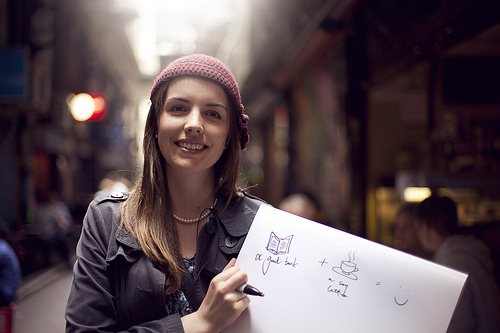Is this the most Powerful Photography Technique?
For many years photographers have used depth of field control as a tool to focus viewers' attention within their work. It seems recently we have forgotten how to use this incredibly effective technique. Learn how to use this properly and your photography will take on a new dimension.
Let's consider two ways in which we can use depth of field:
Firstly we can maximise depth of field so that images are sharp from front to back. This is the most common approach photographers' use but is often poorly executed. Typically a photographer will stop down their lens to the smallest aperture possible and then focus on a point in the distance. This will not make the best use of the cameras optics and often results in a soft image.
The approach I recommend is to stop your lens down to around f/16. Go any smaller than this and the picture quality will suffer. Next, do not focus on a distant object. Focussing on anything over around 12 feet away will cause the lens to focus on infinity which is not what you want; effectively you are throwing away degrees of sharpness in your image. Instead find a point in the foreground about 6 feet away and ensure your camera focuses on this. This may require you set the cameras point of focus manually so if you don't know how consult your cameras manual.

Summer field by joiseyshowaa on flickr (licensed CC-BY-SA)
By ensuring a good depth of field using f/18.0 and focussing on a point in the foreground your images will appear much sharper than otherwise. This technique is known as hyperfocal focussing and whilst I have simplified it here, you will be able to find a depth of field chart or calculator on the internet. The true hyperfocal distance will depend on your camera, lens and aperture combination but the above will help get you started.
The second example is where you use a shallow depth of field to emphasise a subject in the frame. This is a very powerful technique known as differential focus and has been used by many masters of photography in the past. It's well suited to portrait photography where you need to focus attention on the eyes of the subject.

12/30 by Brendan_Timmons on flickr (licensed CC-BY)
To use this technique you need a lens that has a wide aperture. Try to avoid using a wide angle lens (anything wider than a 35mm lens) as these have too great a depth of field. Typically a 50mm lens is good as these usually offer a maximum aperture of f/1.4 or f/1.8. When you open up the aperture to this degree you will find that you only have a few inches of depth of field. It's often better to close down the aperture about a stop to perhaps f/2.4 to give a little more depth of field but also lenses will perform better if the aperture is not at its absolute widest. With your aperture set focus on the subject point you want to emphasise. You also need to ensure the subject is between 3 and 10 feet away to ensure the background is thrown out of focus.
Both techniques will take a little practice to master but it's well worth the effort.




